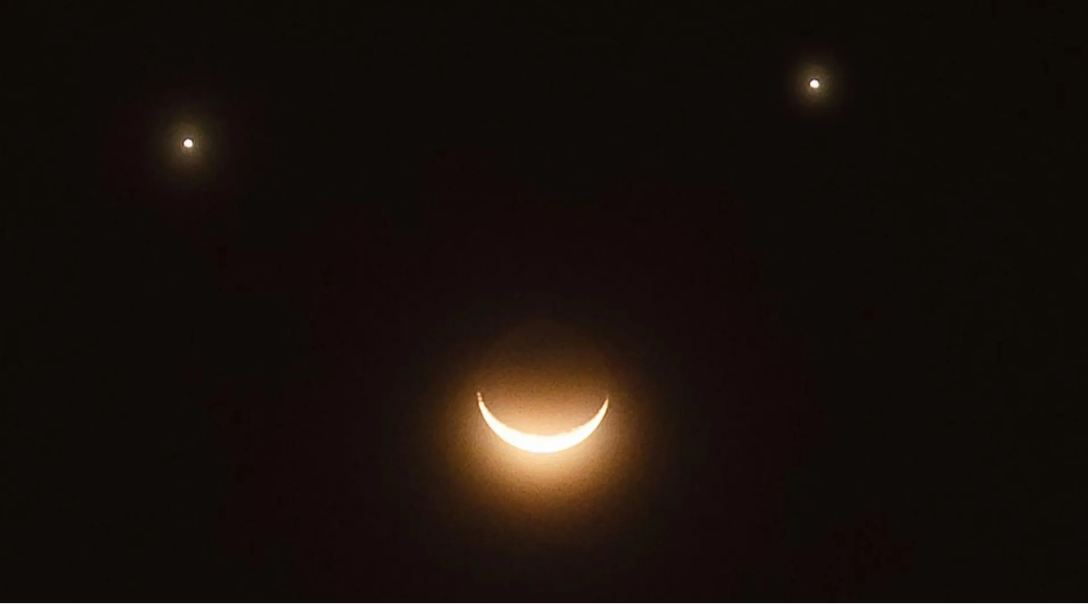Skywatchers across the globe can look forward to a rare and delightful celestial event next week, as a unique triple conjunction of Venus, Saturn, and the crescent Moon will create a “smiley face” in the early morning sky.
Space experts and NASA skywatchers say this stunning alignment will appear in the predawn hours of Friday, April 25, and can be seen worldwide by anyone with a clear view of the eastern horizon.
What is a Triple Conjunction?
In astronomy, a conjunction happens when two planets or celestial bodies appear very close to each other in the sky. When three of them align closely, it’s called a triple conjunction, which doesn’t happen often.
In this upcoming event, Venus and Saturn will look like the “eyes,” and the thin crescent Moon will form a curved line beneath them — creating a smiley face in the sky.
“Venus is higher above the eastern horizon, with Saturn a bit lower, and a thin crescent Moon sitting a little farther north — forming a triangle that to many will look like a smiley face,” said NASA Solar System Ambassador Brenda Culbertson.
When and Where to Watch
The rare “smiley face” in the sky will appear around 5:30 a.m. local time on April 25, and will stay visible for about an hour before the sunlight takes over.
To see it, look toward the eastern horizon from a spot with a clear, open view. Venus and Saturn should be easy to spot with the naked eye. A telescope or binoculars might help you see more detail in the crescent Moon.
If you’re lucky, Mercury might also appear below the smile, but it may be harder to see as it sits low on the horizon.
An Extra Celestial Treat
This fun alignment comes just after the Lyrid meteor shower, which peaks between April 21–22. The shower may bring up to 15 shooting stars per hour in dark skies. Together, these events make the week an exciting time for skywatchers.
A Delight for Early Birds
While not a major event like an eclipse, this “smiley face” in the sky is a rare and joyful sight that anyone around the world can enjoy — no special equipment needed.
As NASA expert Mitzi Adams suggests, just find a good clear view of the eastern sky and enjoy the show!



